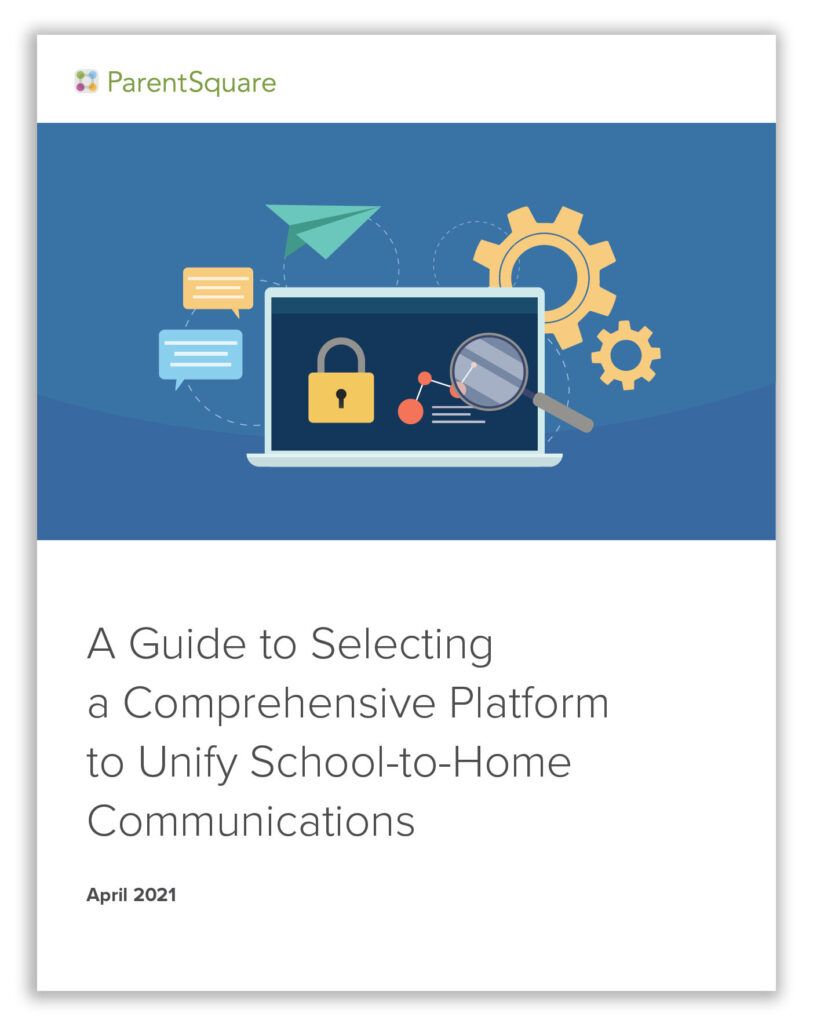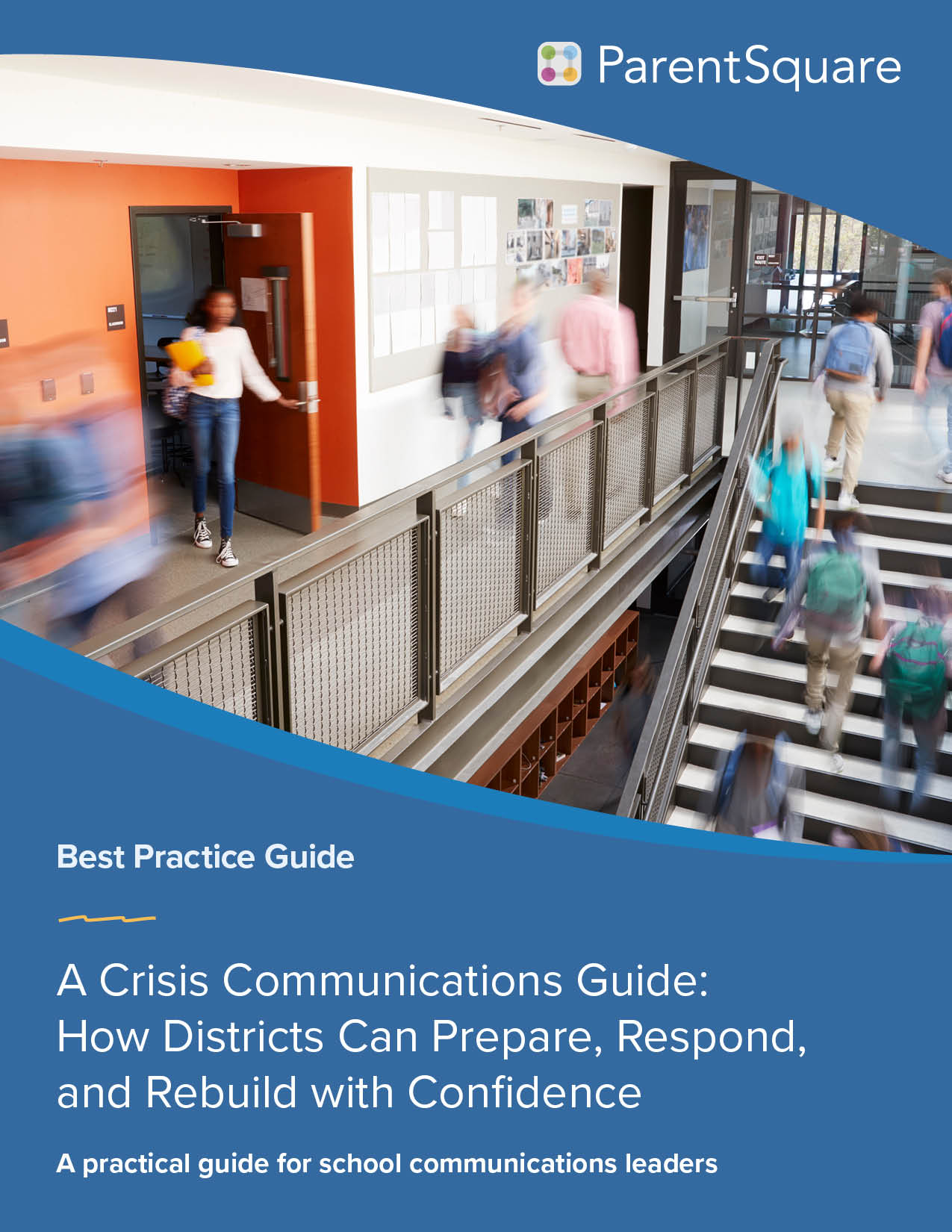
Consistent, efficient, and effective communication with students’ families plays a critical role in keeping students on track academically and engaging parents and guardians with their child’s learning. Creating and maintaining communication lines with students’ families is a challenge that many districts face, and recent shifts in learning scenarios—including remote online, in-person, and hybrid—have compounded this challenge for districts.
At the onset of the COVID-19 pandemic, the transition to fully remote learning tested districts’ capacity for successful school-to-home communications, and many districts struggled to stay connected with students and their families. To help districts find communication solutions that work for parents, teachers, principals, and district leaders, ParentSquare has created a new guide for selecting a school-to-home communication platform that can meet schools’ needs and create better engagement and interaction between schools and families.
Here are five considerations for choosing the best school-to-home communications platform for your school or district:
1. Does the tool offer one unified platform for all school-to-home messaging?
An effective communications platform involves all stakeholders from district administrators to teachers and parents. The tool should offer multiple channels of communication, including voice, text, app, and email capabilities. Features such as two-way instant translation and the ability to set language preferences help ensure equity for all users.
2. What are the safety and security features to protect student and school data?
First and foremost, it’s important that the communication platform you choose is FERPA and COPPA compliant. Features including the ability to send secure, personal documents and digital signature support can ensure student information is kept private and is only available to authorized users. Platforms should also offer options to control levels of user access and restrict permissions.
3. How easy will it be for parents to understand and use the platform?
Parents are most likely to engage with a platform that notifies them of updates that are relevant to their child. Communication platforms that act as a single place to find information and have access to forms, surveys, and payments keep parents in the loop and make it easier for them to not miss anything important. Customizable features such as notification preferences, the ability to choose the mode of communication, and two-way language translations make a communication platform more accessible and equitable for all families.
4. What are the benefits for teachers who will use the platform?
A communication platform should not only benefit learning guardians and students but also should be functional and efficient for teachers to use. The right platform will provide classroom communication capabilities for teachers and free up time in their daily schedules. Communications requesting parental involvement or for scheduling parent-teacher conferences are made simpler for teachers using the right platform.
5. Does the tool support the requirements of districts and administrators?
At a district level, it’s important to be able to track usage of the platform and provide a comprehensive view of parent and guardian participation with school communications, to ensure every family is being reached. A streamlined single platform can minimize the number of communication solutions the district has to manage and support and is able to flag communication errors to ensure contact information is kept up-to-date. Plus, an efficient districtwide platform can send emergency alerts to all contacts simultaneously when the need arises.
Implementing a communication solution in a single platform benefits districts, families, schools, and educators alike. Standardizing communication between school and home can increase parent engagement overall. ParentSquare offers a fully unified product that engages every family with school communications and communications-based services. By keeping everything together, schools are able to track the success and engagement of communications, improving contact accuracy and communications equity while maintaining privacy and security.
To learn more about choosing a communications platform, read the new ParentSquare
“Guide to Selecting a Comprehensive Platform to Unify School-to-Home Communications.”

